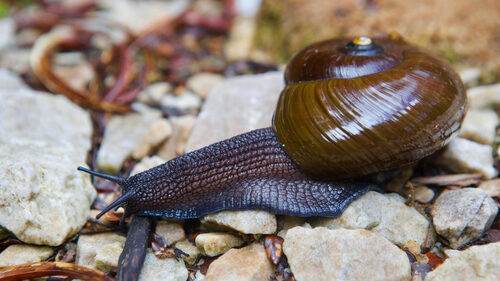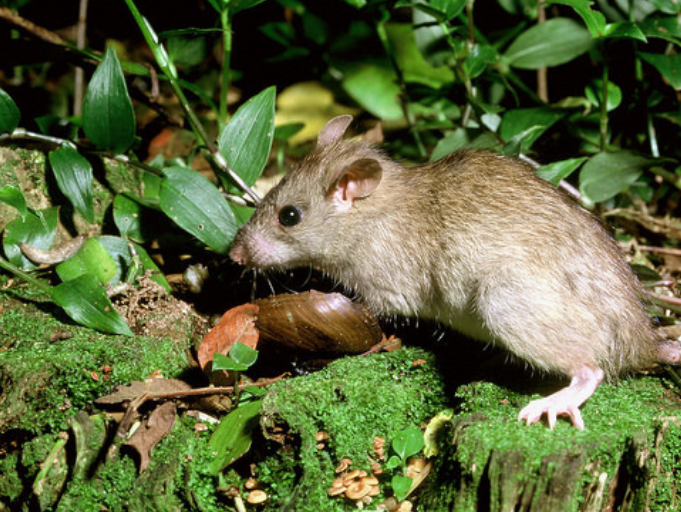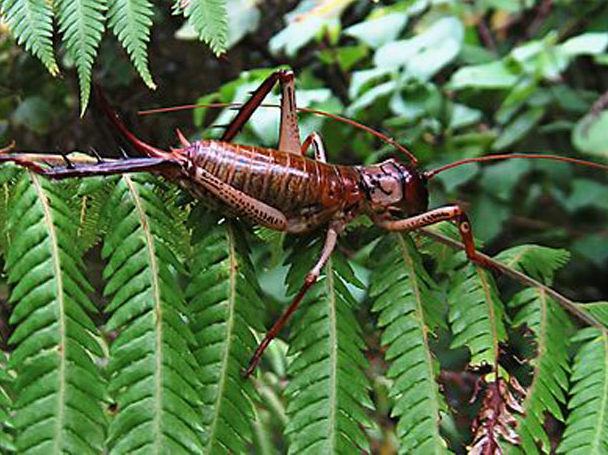We know New Zealand’s native birds aren’t thriving – but what about the little guys – the VERY little guys? What’s happening with our insects and other invertebrates? Today’s Friday blog looks at what recent research can tell us about our smallest natives: what some of their challenges are and what we can do to make life easier for them.

One aspect of studying invertebrates is finding ways to tag such tiny creatures for ‘mark and recapture’ analysis. But a recent study by Massey University researchers found that the very act of attaching devices to invertebrates can attract ship rats to them. Rats have an incredible sense of smell – and glues and adhesives have a scent that even humans can detect, so it’s not surprising that rats take an interest when this new aroma arrives in their environment.
The research looked at three different adhesives used to attach passive integrated transponders (PIT tags) to snails and found that some adhesives were more likely to attract the attention of rats than others. No snails were harmed in the course of the experiment – lab rats and empty Powelliphanta traversi tararuaensis land snail shells were used.

Rats interacted more with shells that had Loctite (R) adhesive and the researchers recommended that this adhesive be used with caution in field research. The best adhesive choice for field studies, as determined by the Massey research, was Selley’s Liquid Nails (R).
This article was published in the New Zealand Journal of Zoology and can be freely downloaded at: Use of adhesives to attach devices to invertebrates: implications for depredation by ship rats (Rattus rattus) (2013)
How does the restoration of urban forest remnants affect invertebrate inhabitants? One would expect the little guys to benefit as well as the urban birdlife, but the findings of a study on urban tree weta abundance in one such urban remnant suggests that not everything we might potentially do during such a restoration is beneficial.
For example, an urban forest remnant before restoration might consist of large introduced trees with an understory of regenerating natives. Larger trees tend to provide more crevices and refuges for weta than small trees. Thus, removing such exotic trees is likely to be detrimental to tree weta, even though felling introduced species restores the forest remnant’s native composition. Cutting paths and walkways through a restored forest may also be to the detriment of invertebrates and, with many invertebrates including weta being nocturnal, urban lighting either along such pathways or bordering the reserve, is also likely to have an influence.

This study was carried out at Hillcrest Park, a 1.5-ha urban remnant in Hamilton that is bordered by sports fields, residential and commercial buildings, with no connectivity to other forest remnants. The forest includes mature kahikatea trees and an immature broadleaf understory. There is a hall within the park which is accessed via a brightly lit path. The researchers looked at how these features and other aspects of the habitat, affected the abundance of Auckland tree wetas within various sections of the forest remnant.
This research is published in the New Zealand Journal of Ecology and is freely available: Predictors of relative abundance of tree weta (Hemideina thoracica) in an urban forest remnant (2015)
When a research paper is titled “Dramatic increases in weta…” it’s got to be a good news story. This paper, published in 2011 in the New Zealand Journal of Ecology, looks at what happened to the weta population on Maungatautari – a predator-proof fenced sanctuary – following the eradication of mammals.
This ‘before after control impact’ (BACI) experiment found that not only did total weta numbers increase dramatically (12-fold for adult weta, 52-fold for other weta), but the age structure and sex ratio of the population also changed once predation pressures were removed.
The full article is freely available at: Dramatic increases in weta (Orthoptera) following mammal eradication on Maungatautari – evidence from pitfalls and tracking tunnels (2011)

